The Article
390 Streamer & Pre-Amplifier From Moon
16th May 2019
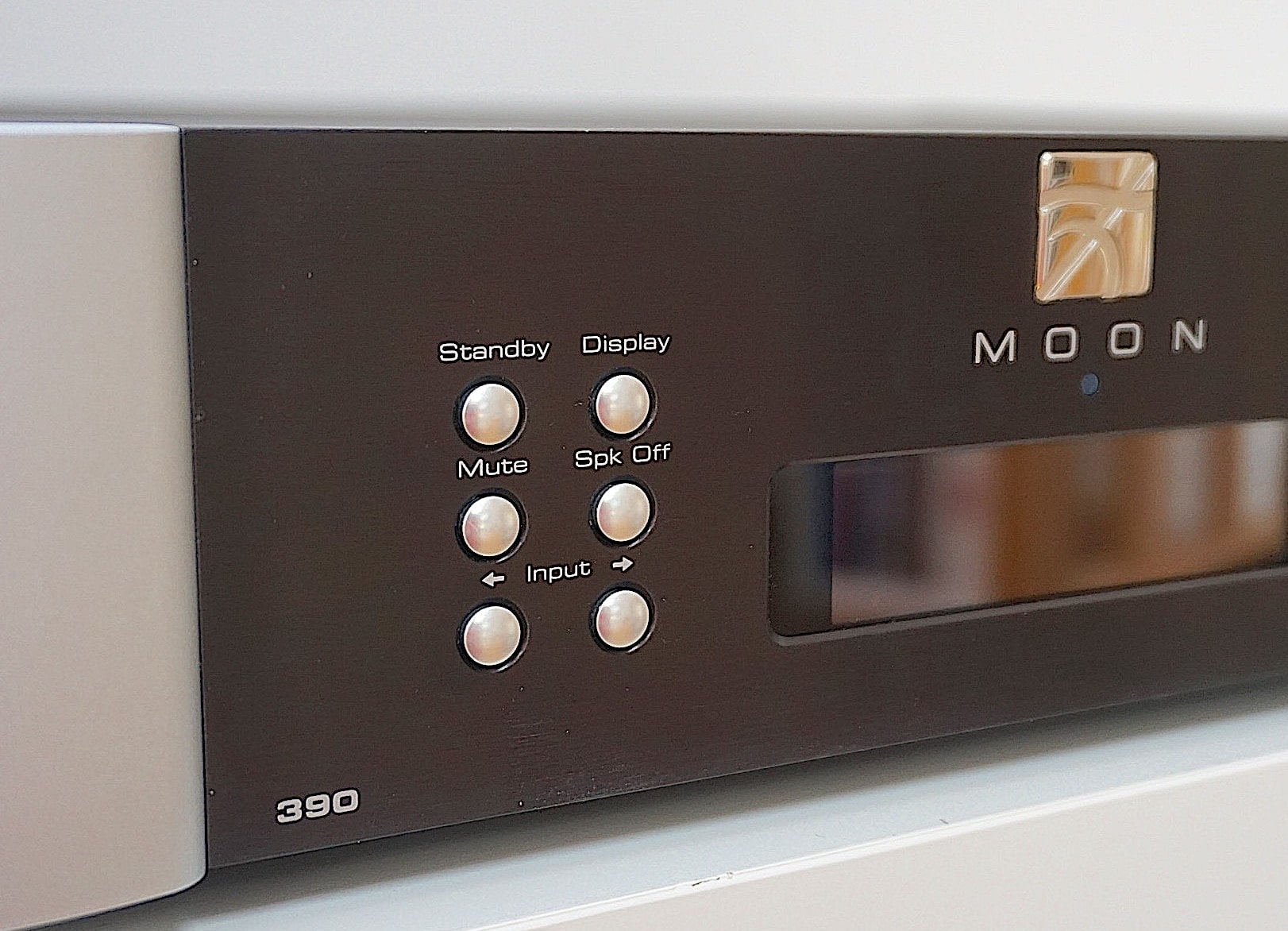
Packing in a feast of digital but also analogue facilities in a single chassis, Paul Rigby reviews the Moon 390
The concept of the all-in-one hi-fi unit has become incredibly fashionable of late. Of course, all-in-ones do differ in terms of the ‘all’ bit. Some provide digital only features, some add analogue goodies, others provide a CD player but it doesn’t stop there. You can easily pluck six all-in-one units from the larger manufacturers and every single one would offer a different suite of facilities. Hence, reviews are valuable to not only state what’s on the table in terms of features but to see how they all work together. The latter can be a bit of a sore spot.
I say that because, when you stuff 1001 different audio features into one chassis, then you’re asking for trouble. Normally in the shape of electronic contamination between one module and the next which produces noise. Successfully designing an all-in-one product to produce little or no extraneous noise is tough, very tough. Anyone who does this successfully can claim to have created a work of art.
So, let’s see if we have a Mona Lisa on our hands. Before we look inside this box, I did wonder why the company decided not to go all the way and fit an amplifier inside the chassis to create a stand-alone all-in-one, “Sometimes companies chuck in an amp that’s not particularly well developed or they shoe-horn an amplifier into the real estate that they’re left with in the product,” said the company. “The Ace, for example, is less of a no-compromise design, built to a price. We think it’s a fabulous product that offers 80% of what’s in the 390 plus an integrated power amplifier. At that level, we put in nice amplifier – the same amp circuit as the 240i integrated amp, a £2,000 amplifier. Even that has an over-sized, custom-made toroidal transformer in it. At the level of the 390 though, it demands a better amplifier than one we can put inside.”
The company also commented that it had noticed customers buying 390s and using the unit with a pair of active speakers.
If you look at the busy rear panel, you may be interested to know that everything connected to those sockets is located in the rear 50% of the casework. Nothing is at the front, except hardware relating to the front of the unit. The reason? To create a short signal path. Internally, there is a second casework for isolation purposes. The power supply is within that.
The Moon Hybrid Power supply (MHP: lifted directly from the 780D reference streamer) begins in switch mode to allow it to be used in any territory in the world, no matter what the rating. From there, the MHP produces its own analogue, linear power supplies. That runs to the main boards of the 390. The MHP filters DC on the mains and is not concerned about fluctuations in voltage, “That is one of the things that modern supplies of power are plagued with at the moment,” said the company. “Mostly because the Grids are saturated. You’re also getting noise ripples on the mains created by so many people now using little wall-wart power supplies for phone charges, laptops, TV, USB lamps and more.”
Noise can still get into the unit which is why the generation of analogue, linear power supplies, mentioned above, is performed. That, “…effectively prevents noise getting into the unit.”
The design is quite innovative in many ways. For example, there are tiny audio circuits in the Moon with mini-power supplies backed by 3D design. By that, I mean that high quality capacitors (those little red blocks you can see below) are positioned either side as a physical, three dimensional as it where, shielding of the circuit, “Also, the field effects of any components we use are always in the opposite plane to the audio component.” Again, to lower noise.
Inside the chassis is a MiND2 streaming daughter board (that little blue circuit board you can see in the images here), this a removable board for later upgrades to MiND3, 4, 5 and so on, if ever they arrive. The 390 was the first product to use MiND2. Speaking of updates, firmware updates are all now done over the air, via the included app. If you don’t want to upgrade right now, a time clock will remind you in five days time. If you do, then the Moon factory servers upload the information direct. Upgrading is automatic. The firmware upgrades include the main chassis firmware, MiND streaming module, HDMI, MQA and FPGA (the DAC and receiver chip).
There are two wi-fi antennas for improved coverage and a wired option. On the front left-hand cheek of the 390, you’ll also find the Bluetooth antenna. It’s there because these cheeks are injection moulded with no metal within.
PHONO AMPLIFIER
The MM/MC phono stage is integrated on the main board but is also upgradable. The phono stage is derived from the 810 phono stage. It doesn’t match the performance of the 810, I hasten to add but the development is based upon the 810. So how is such a sensitive item like a phono amplifier isolated in such a busy chassis? “The phono sockets are the first set you’ll see if you look at the rear. The phono amplifier is tucked away at the back right hand corner of the casework. Its power supply is right down at the front of the casework and the incoming power is at the back left-hand corner. The power supply is also fully shielded in its own casework. So, it’s like having a two box phono stage. Also, the mains cable is kept as far away as possible.”
There’s a headphone socket connected to a dedicated headphone amplifier in there too, that exists on the front panel. It’s separate from the rest of the amplifier circuit.
All of the digital inputs on the rear run to 32bit/384kHz and DSD256 via an ESS DAC PRO chipset. USB is full asynchronous. There’s also a USB host socket to attach a thumb drive. The content information for that drive is then listed on the app – a nice touch. There’s also a healthy supply (four) of HDMI inputs for Smart TV and Blu-ray use. This turns the 390 into a 2-channel AV amplifier. The HDMI sockets are fully isolated and are 4K compatible.
Finally, the 390 features Roon-ready status plus facilities such as Tidal, Qobuz, Deezer and TuneIn radio. Spanning 42.9 x 8.9 x 33.3cm, it weighs 10kg.
ENTERING GRUMPYVILLE…
…Population: 1
So all is sweetness and light? Well, it did have some issues. Not earth shaking, I have to admit, but irritating all the same. If the internal technology for the 390 is over-engineered (a good thing), then the interface is under-engineered (not so good).
Firstly, if you are going to include Bluetooth in a product, any product, then the ability to pair that Bluetooth with your phone or other device should be plain, simple and easy to do. Some products send out an automatic pairing signal so you must open your phone’s settings, for example, and click on the hi-fi device and you’re immediately connected. Others feature a pairing button.
The pairing facility or button should be labelled, stand-alone and quick to access. Most manufacturers see this, even those proffering low cost items. Moon though buries the pairing process in the nested Setup menus accessed via the front fascia screen sitting, cheek by jowl, with the likes of settings for phono amplifier gain, setting up a DNLA network and the like.
No. No. And, lets ram this point home shall we? No. Bluetooth, even though it might be part of a high-end hi-fi piece of kit, is a lifestyle feature. It’s not a nerdy thing. Bluetooth is inherently not about network addresses and DIP switches and geeky magic. It’s supposed to be simple and easy to access. That’s the point of it.
Moon should have backed off and added a clearly labelled Bluetooth pairing button both on the chassis and the remote or an automatic sensing system to do it for you.
Also, the Bluetooth pairing command times out after 40 seconds or so. If you’re distracted, you’ll have to go through the nested menus all over again. Finally, when Bluetooth does pop up on your device, it takes it’s own sweet time to do it. My iPhone was all of six inches from the 390 and it took a long 10-15 seconds to connect. I expect better.
Second irritation? The nested-menu, in-depth set-up section. This time, I ask…why? Why even have it? I’m paying £5k for this thing. Create something easy for me to use and make it workable from the chassis and the remote. Add a few more knobs and switches if you really have to. Give me a pictorial app with lots of hand holding and idiot proof directions. For a product like this, there should be zero under-the-hood work. Instead? I have to bounce around nested menus and press two tiny buttons on my hands and knees.
Moon should be thinking Apple-like ease of use-type thoughts not cardigan-wearing geeky dreams circa 1972.
LEAVE THE NEST
Nested menus is an interface that should have been shot in the head in 1995. Do you want a specific example that pricked my ire? It actually took me seven button clicks to change the Gain setting on the built-in phono amp. I’d rather tackle a bank of dreaded DIP switches on the rear of the chassis any day or, as Parasound does, a couple of toggle switches and a small dial on the back of the chassis.
Also, the wealth of phono amplifier menu options regarding gain, capacitance and more are generous to a fault and welcome in theory. They allow a precise set-up of the phono unit. They actually provide more options than many external models I’ve seen. On this level, the phono amp set-up is very impressive indeed. On the other hand, this is too much for a built-in unit and for an all-in-one device as a concept.
Think about it, if you’re the sort of guy who is such a dedicated vinyl fan that you demand that sort of complexity from a phono amplifier then wouldn’t you be looking for a specialist external unit with enhanced sound to boot?
It’s lovely to have a wealth of phono amp options on the 390. It’s great to see them. But, again, if you’re that much of a geek then you’re going to go external, surely? No matter how good this phono amplifier sounds and it sounds terrific I have to say right now, if you’re a hard core vinyl user, an external model will be sought out because of its inherent basic potential for superior sonics. You could say that a dedicated vinyl geek wouldn’t be even buying the 390 in the first place. So the complex set up for the built in phono amplifier is a waste of time because its aimed at the wrong customer.
No-matter. Bottom line and the real point to all of this? Nested menus are moribund, old fashioned and obsolete. You see my direction of travel here?
I have another streaming entertainment system in my living room similar to this Moon 390. It’s called a TV. Remember them? It’s packed with USB ports, optical ports, I can stream there too, Wi-Fi is crawling all over it. I can plug in network dongles and cable and satellite, amps, speakers, DACs, mine has a built in camera and on and on. The most techie thing I’m asked to do there is type in my password for my Wi-Fi. That’s it.
Yes, I know that the TV doesn’t offer a phono amp or coax sockets to plug in a CD transport and I realise the bottom line performance between the TV and Moon is laughingly chalk and cheese. Of course I know that. That’s not the point. My point is that a network player, to my mind is a lifestyle system (Am I that out of touch here? Or is it Moon who is out of touch?) At least, that’s what the hi-fi industry would have us believe with this type of product. An all-in-one unit is not or should not be a geek’s hobby toy.
If all I care about is sound, I buy separates. Maybe I’ll buy Moon separates but I buy separates. The guy who buys an all-in-one wants great sound I know but his priorities are also shared so quality sound is only part of what he wants. I assume that he’s looked at separate components and rejected them for all kinds of reasons including small footprint but also ease of use. Surely, that’s an important factor in purchasing an all-in-one in the first place?
Moon might recoil and state that I’ve being very harsh. That’s actually not my intention. To be fair to Moon, the company is not alone on this. There are plenty of others, too interested in their navels to see the light but I’m reviewing a Moon product and I’m talking about a high-end £5,000 product, not a cheap and cheerful £500 box, so Moon is in the firing line. The hi-fi industry and Moon in this instance, need to wake up and inhale a few roasted beans.
Look, let me reel in my grumbling a bit. The Bluetooth and Setup sections are issues and I’ve had a right old moan about them (can you tell?) but none of them are damning as long as the sound quality is up to scratch (we’ll see about that) because the rest of the system is pretty straight forward to use. My rants are more to do with the disappointment from an otherwise nicely designed system.
All I am doing here is making you aware of what you’re buying.
A modern network player should have care and thought infused into its interface in addition to the electronics under the hood. More than most hi-fi components, I feel.
If you go into the Moon 390 knowing from the off and you accept the fact that you will have to tackle a fairly old fashioned interface and you’re happy with that fact, then you’ll be fine.
Enough gripes. Let’s hear the thing.
SOUND QUALITY
As most all-in-one systems pack in a lot of features, this test proved a busy affair.
I started with the MiND app controlling TuneIn radio and locked into DemonFM which output a MP3 signal at 320Kbps playing a selection of contemporary R’n’B and rock.
There is a techie issue here because the MiND app runs over the local Wi-Fi network.
Now, I’m of the opinion that, if you play your hi-fi, you shut down local over-air Wi-Fi or you connect direct via cable. In my case that means unplugging my listening room’s Apple Wi-Fi extender. I’d even turn off the router if it was not going to cause family arguments. At least for the duration of hi-fi play. Hence, for my case (yours might be different), using the MiND app (as opposed to operating via the remote) meant a slight increase in Wi-Fi-related noise as the Wi-Fi extender added a slight midrange spotlight to the overall playback.
Firstly, this was a streamed signal. Secondly, it was a MP3 stream. Nevertheless, playing a slice of Muse, I was impressed by the overall discipline of the presentation. There was no upper midrange glare from the MP3 itself, no edge and no obvious treble pinch. MP3 is a lossy standard so all of the musical data is not present and that could be heard. Treble was rolled off, midrange was recessed and bass was warm enough to heat your hands up on a cold day. And yet, if I was going to listen to a yucky MP3 file? That’s how I’d like to do it. I’d rather it gave me this cuddly, friendly and chummy approach to music then the all too familiar knife edge, slicing flesh, brighter than the heart of the sun option that lossy files can give you via some streamers. I don’t know how often I’ve heard a stream from another hi-fi unit and felt the need to visit A&E afterwards. So, thumbs up to Moon here.
Continuing with the MiND app, I was able to plug in a USB stick and access it directly via the app with the USB stick’s contents listed in full. As I mentioned above, this is a very nice touch. From there I played Sonny Rollins’ St.Thomas at 24bit/96kHz and Eric Bibb with Meet Me At The Building at DSD 64. What I noticed was that I was unable to bounce directly between tracks on the USB menu screen, despite all of the available tracks appearing on my phone’s screen. That is, if I played Track 1 then tapped on Track 2, nothing would happen. To move from Sonny Rollins to Skunk Annsie, for example, I had to back out of the track screen to the main Library menu and then go back into the USB screen whereupon the USB stick would be rescanned. At this point I could play a different track. If I wanted to play a third track? I’d have to back out of the menu again and then re-enter. Clunky to say the least.
Once up and running, high resolution tracks sounded far superior, of course, than the Internet radio output or MP3 streams. I heard a more involving sonic output with a broader soundstage with added space in between instruments and vocals.
BLUETOOTH
I could have played tracks loaded onto my iPhone through Bluetooth via the MiND app but decided to stop the app and send the music directly via Bluetooth instead, unplugging my Wi-Fi extender too. I played a lossy file version of Marvin Gaye’s Mercy Mercy Me via my iPhone 8.
Would you believe it, because the noise from the Wi-Fi extender dropped away it added lots of air to the soundstage of the Bluetooth stream. Yes, there was a smearing to the mids here from the lossy stream with a typical pinched treble and bass had that MP3 constipated feel but the presentation was relatively open and spacious with even a pseudo-3D effect to the soundstage which lifted an eyebrow. In fact, the soundstage was beautifully ordered offering a very mature aspect this normally execrable lossy sound file.
I tried a slice of analogue next and tested the built-in phono amplifier. On the platter was Nancy Wilson’s You’ve Got Your Troubles from the original Capitol/EMI pressing of A Touch of Today (1966).
I have to say how surprised I was at the quality of the analogue output from this built-in unit. I also have to say that this is the best internal phono amplifier that I’ve ever heard, anywhere, at any time. It was a stunner. Mature, rich in tone with restrained yet significant detail, I was most impressed by the breadth and complexity of the soundstage that provided a rich and lucid presentation. The open nature of the upper midrange was truly impressive. Wilson’s vocal was both naturalistic and relaxed in tone. I actually had to make sure that I was playing an internal model. I have to say that this built-in unit challenges many external units in terms of sheer performance. Moon should be proud of this feature.
I then plugged my Astel&Kern AK120 digital player into the optical socket and tested Bob Marley’s I Shot The Sheriff at 24bit/96kHz. Here I was happy to hear a level of clarity that I rarely hear on streaming and digital players. For example, the lyrics from Marley later in the song tend to be muffled enough to prevent me hearing what he’s saying. Not with the 390. Marley’s diction was enhanced and focused and so, for the first time, I could discern his words from this late song section. Once more – and this is a theme running right through this review – the imagery and sense of order across the soundstage helped enormously, providing a sense of space between instruments and voice.
Next up, I dragged in an external CD player to act as a transport for the 390’s DAC. Here, I played a CD version of Rosemary Clooney’s Get Me to the Church on Time from the Bluebird album, Rosie Solves the Swinging Riddle.
CD play was beautifully considered. Again, that broad and spacious soundstage was heard, the output was disciplined with no nasties in terms of treble, midrange and bass. The sonic spectrum was very well presented with a balance that was a wonder to experience, considering the DAC is installed into the unit alongside a lot of other technologies.
KEEP YOUR BALANCE
It was at this point that I decided to move from a single-ended connection to balanced to see how this change the performance. I retained the CD transport as a source.
The result? Noise dropped away like dead weight, the midrange sounded smooth and flowed like a quiet yet powerful river while bass was strong. It integrated perfectly to provide a naturalistic yet forceful foundation to the song as a whole. There was a slight warming to the presentation as whole. Not enough to damage upper midrange detail but enough to give the music a cosy feel.
I wondered if that situation would change if I then removed my own pre-amplifier entirely and plugged the 390 directly into my monoblock power amplifiers. The 390 itself would then act as a pre-amp. Removing an entire hi-fi component would be very interesting indeed and would give the 390 a more direct connection to the ears.
Plugging the 390 directly into a pair of monoblocks via singled-ended cables offered all of the detail, space and air but with an output that extended the upper mids, treble and dynamic reach as a whole. The precision was just right, the focus was bang on, the transparency positively delicious and the tonal balance was top notch.
Vocals were textured yet emotive with vocal effort and nuance easily heard while subtle details like the upright bass were quietly in evidence. That is, it was not pushed artificially yet it gently sat at the base of the soundstage doing its thing but was easily tracked by the ear: unhurried yet incisive.
CONCLUSION
The Moon 390 network player and pre-amplifier is not only value packed in terms of the features it offers but the inherent internal design and how each element is positioned and isolated shows care and attention. This product has not been thrown together. There has been real thought placed behind this one. In fact, for an all-in-one player, the performance of the Moon 390 is so high, the quality will spill over and produce a stain on your carpet.
MOON 390 NETWORK PLAYER/PRE-AMPLIFIER
Price: £4,950
Tel: 0131 555 3922
Website: www.simaudio.com
GOOD: internal design, component quality, feature set, direct power amp connection, overall sound quality
BAD: menu interface, app quirks
RATING: 8
[Don’t forget to check out my Facebook Group, The Audiophile Man: Hi-Fi & Music here: www.facebook.com/groups/theaudiophileman for exclusive postings, exclusive editorial and more!]
REFERENCE
Origin Live Sovereign turntable
Origin Live Enterprise 12″ arm
Van Den Hul Crimson XGW Stradivarius Cartridge
Soundsmith Paua Mk.II cartridge
iPhone 8 smartphone
Icon PS3 phono amplifier
Aesthetix Calypso pre-amp
Icon Audio MB845 Mk.II monoblock amplifiers
Quad ESL-57 speakers with One Thing upgrade
Tellurium Q Silver Diamond cables
Blue Horizon Professional Rack System
Harmonic Resolution Systems Noise Reduction Components
All vinyl was cleaned using an Audio Desk’s Ultrasonic Pro Vinyl Cleaner

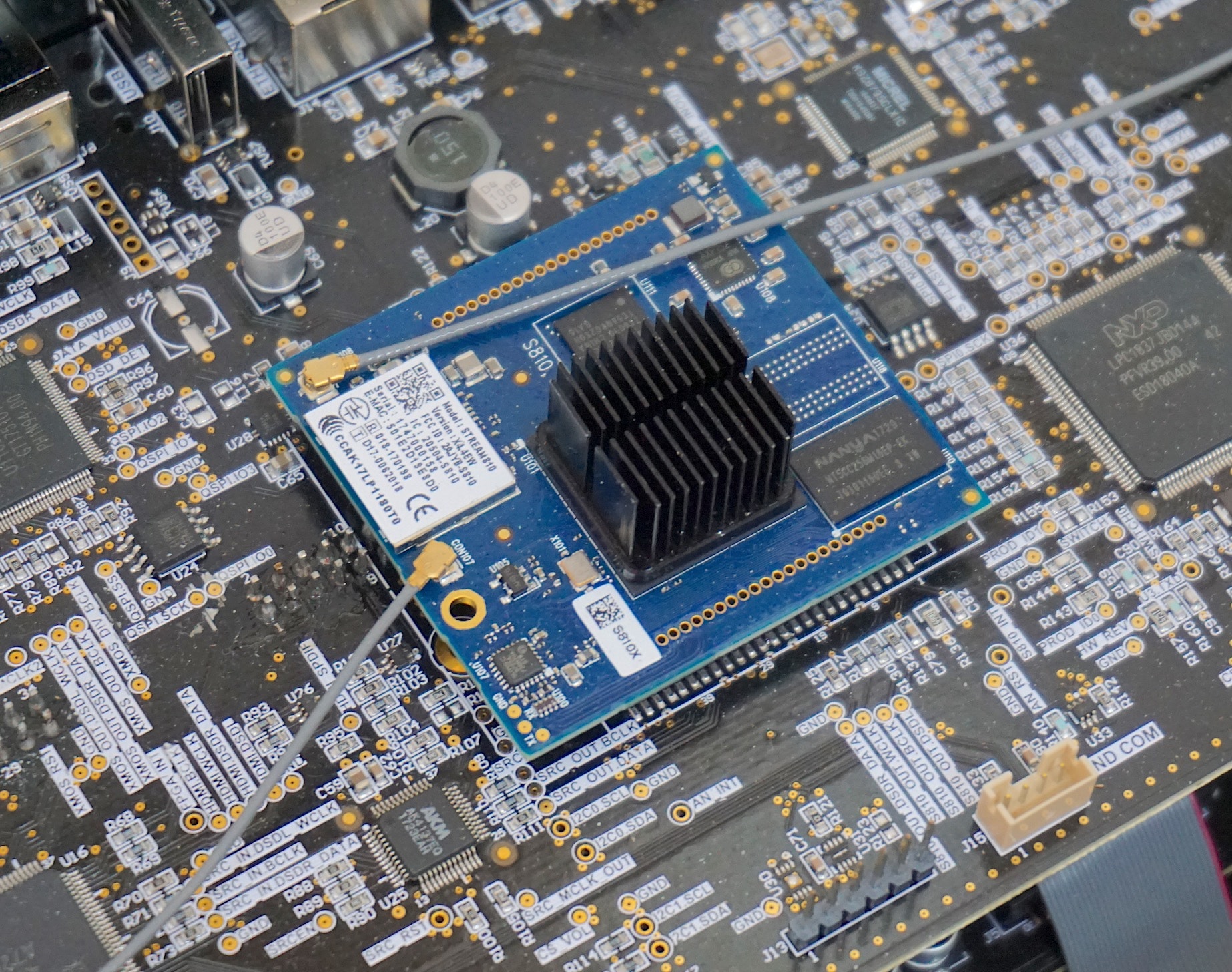
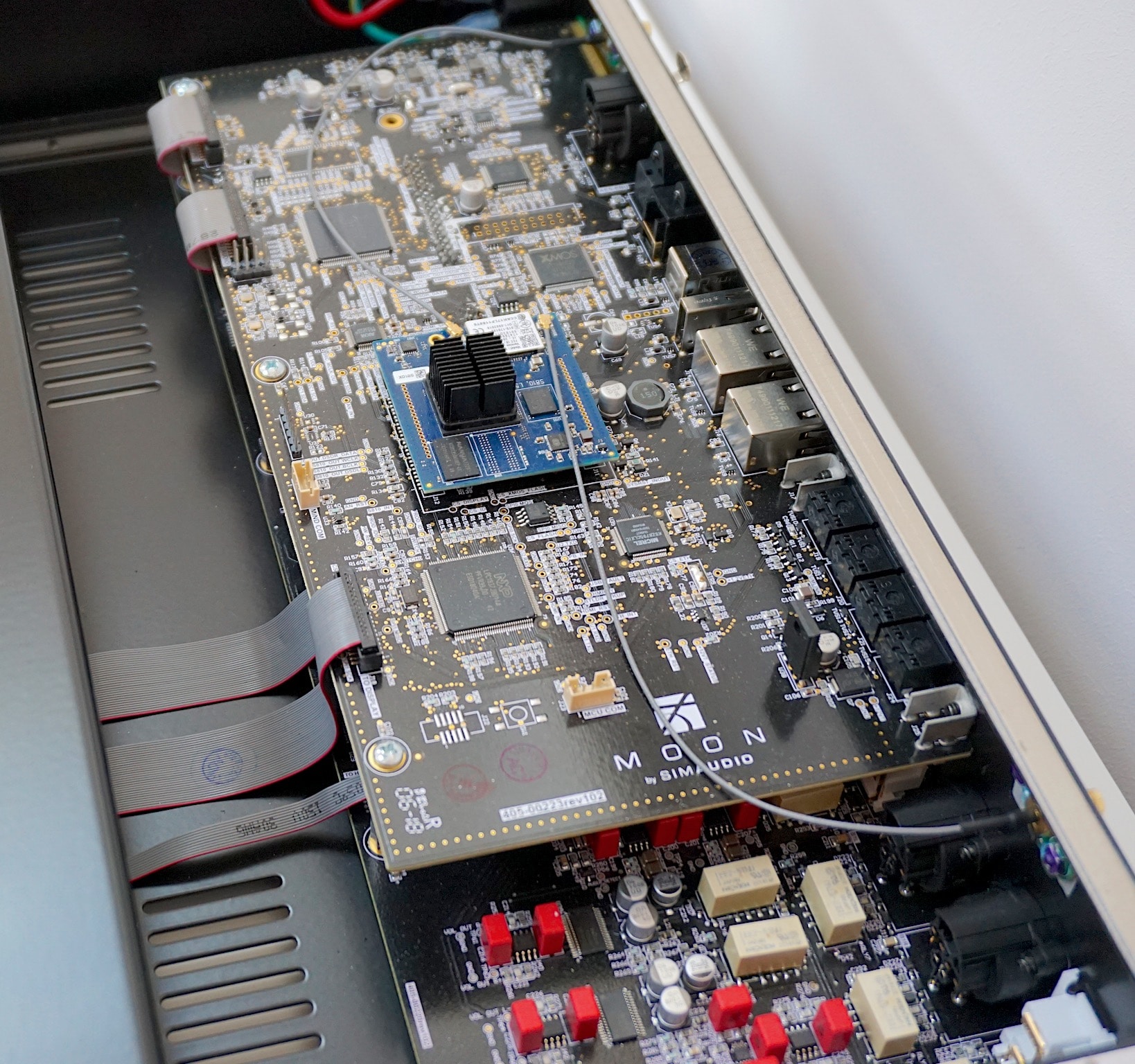
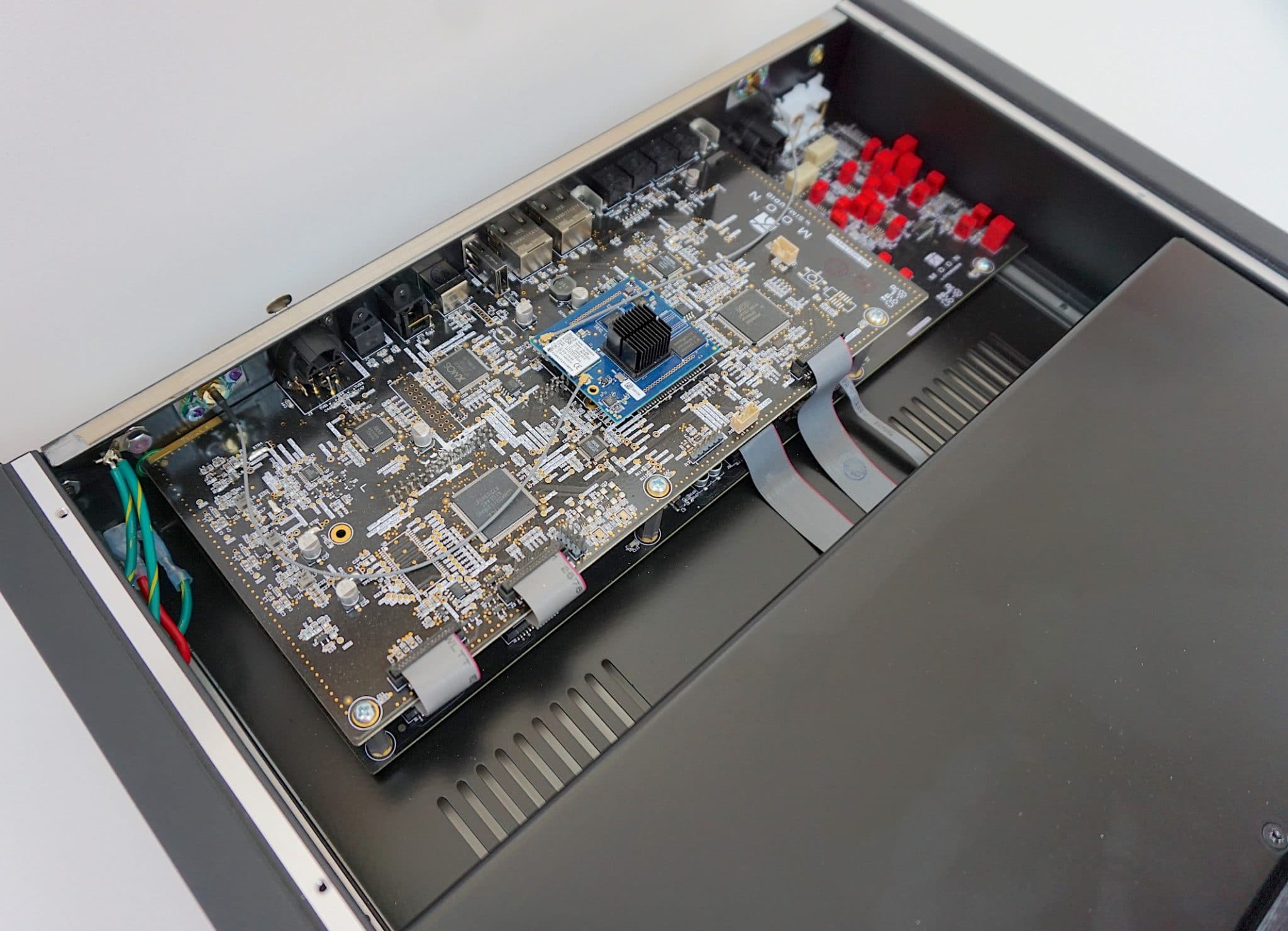
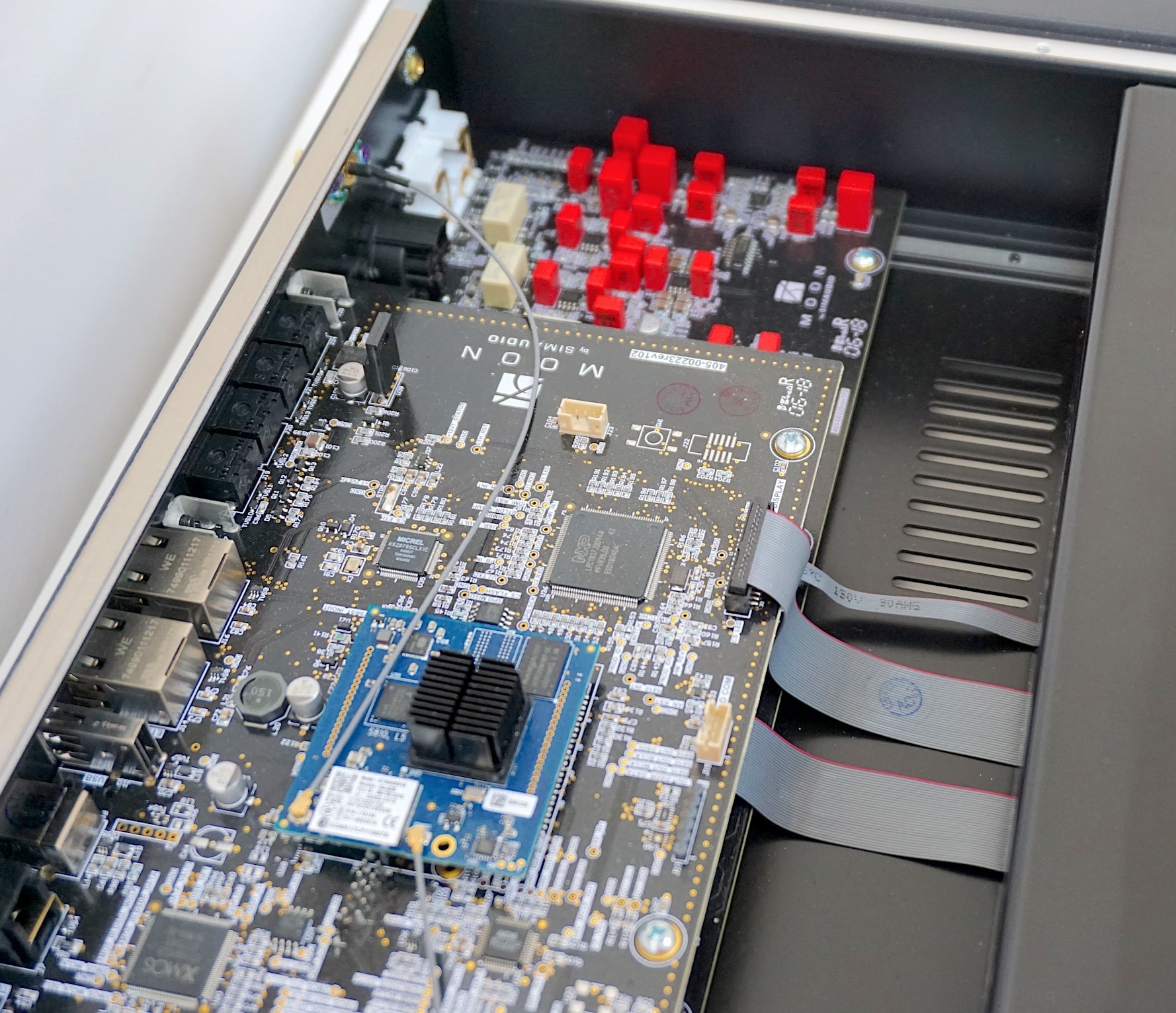
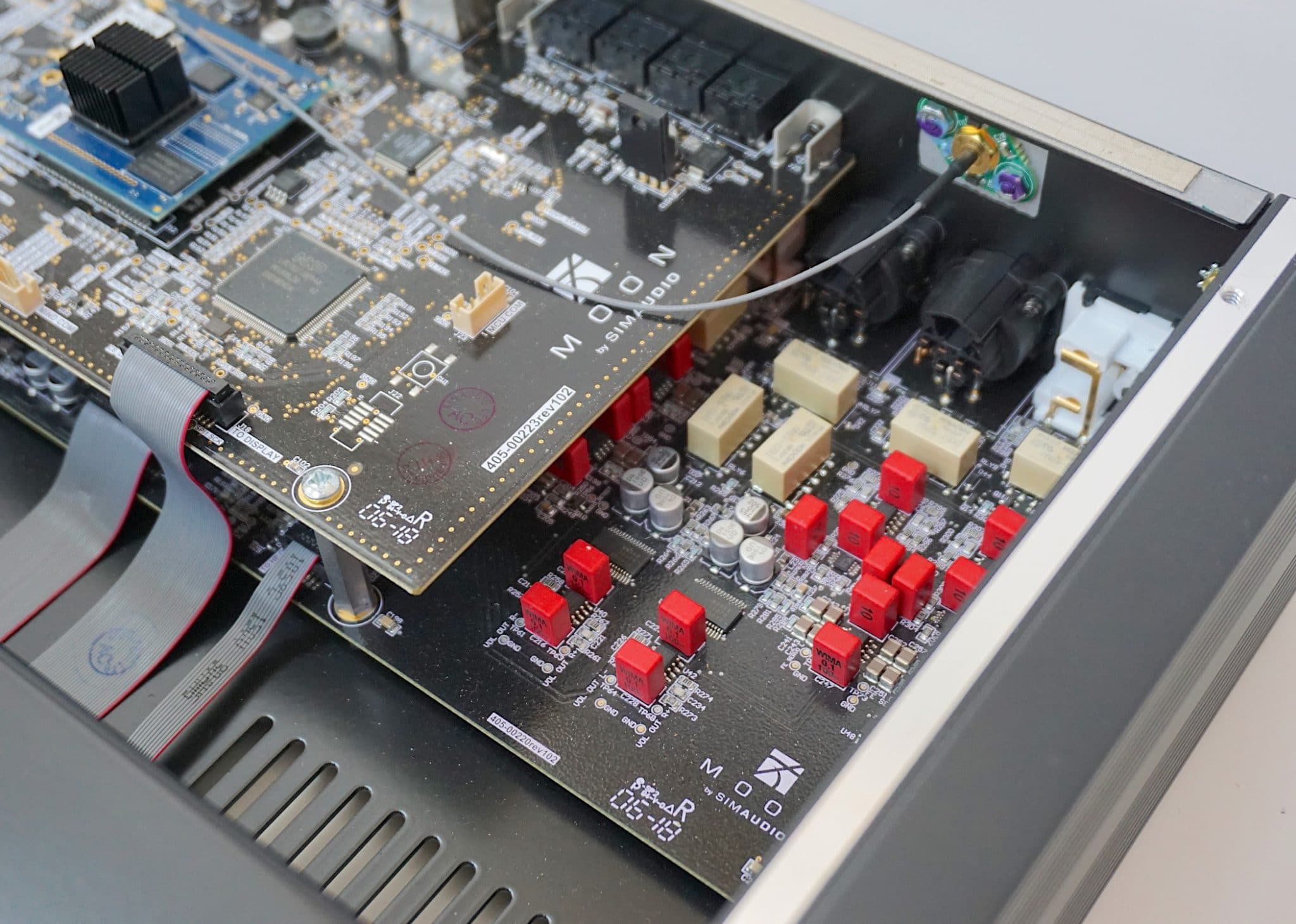
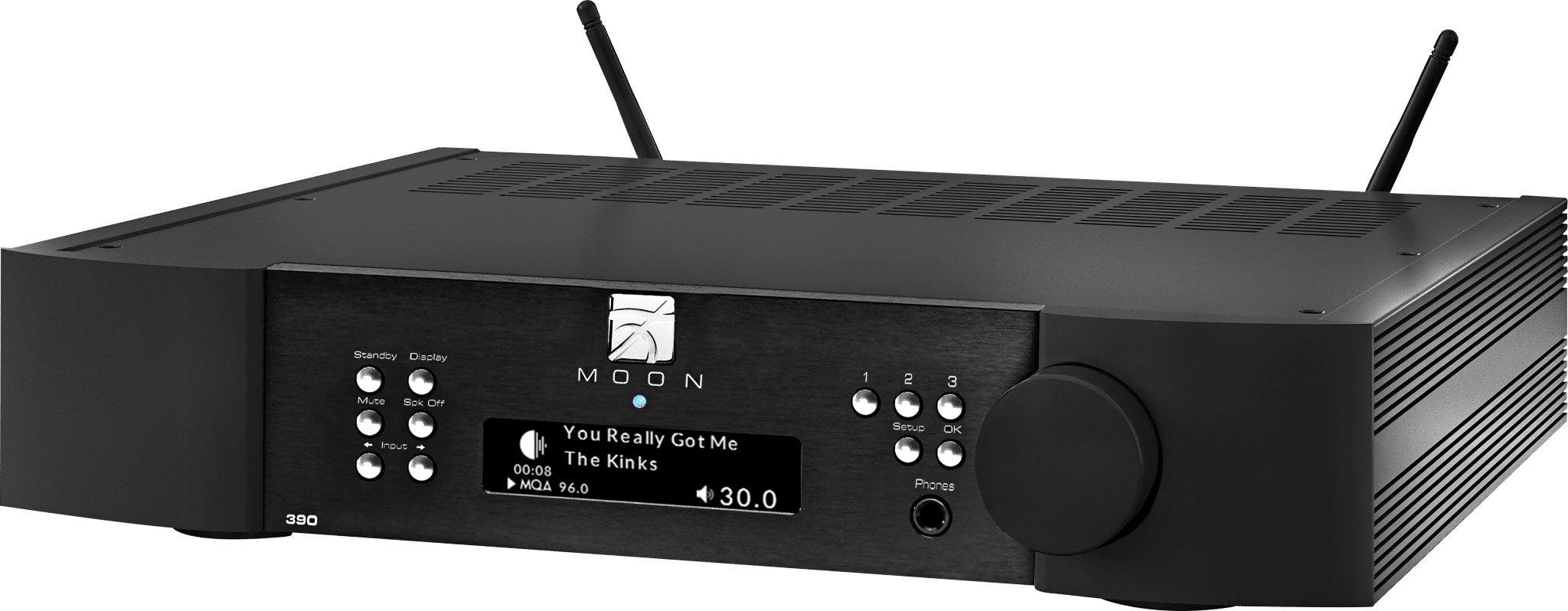
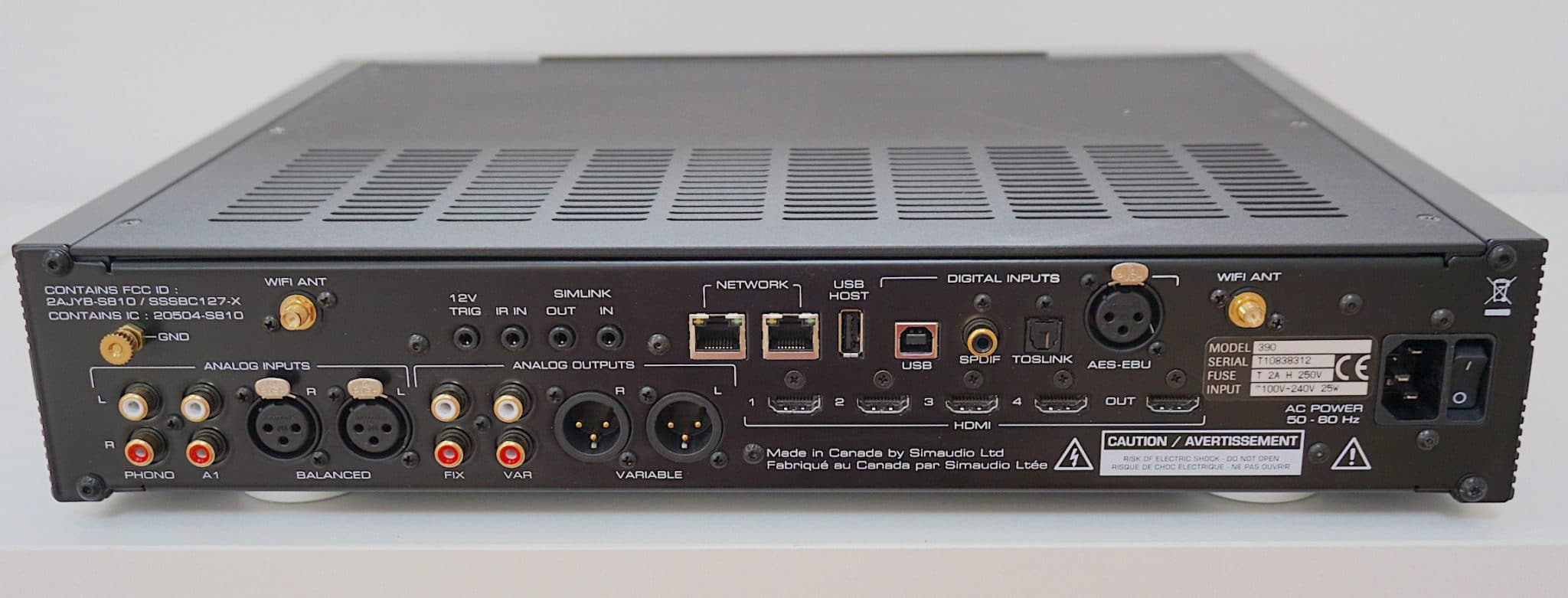
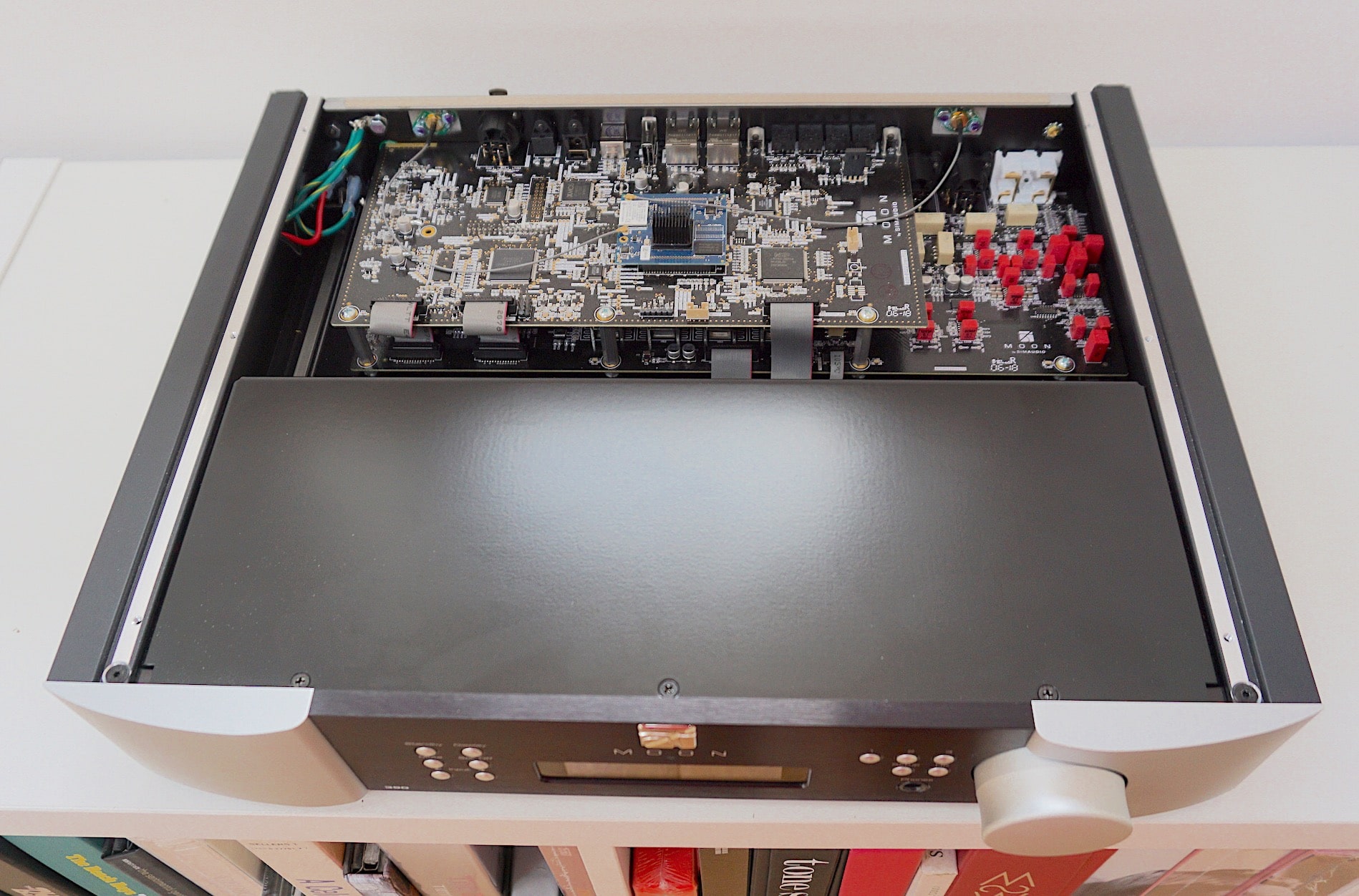
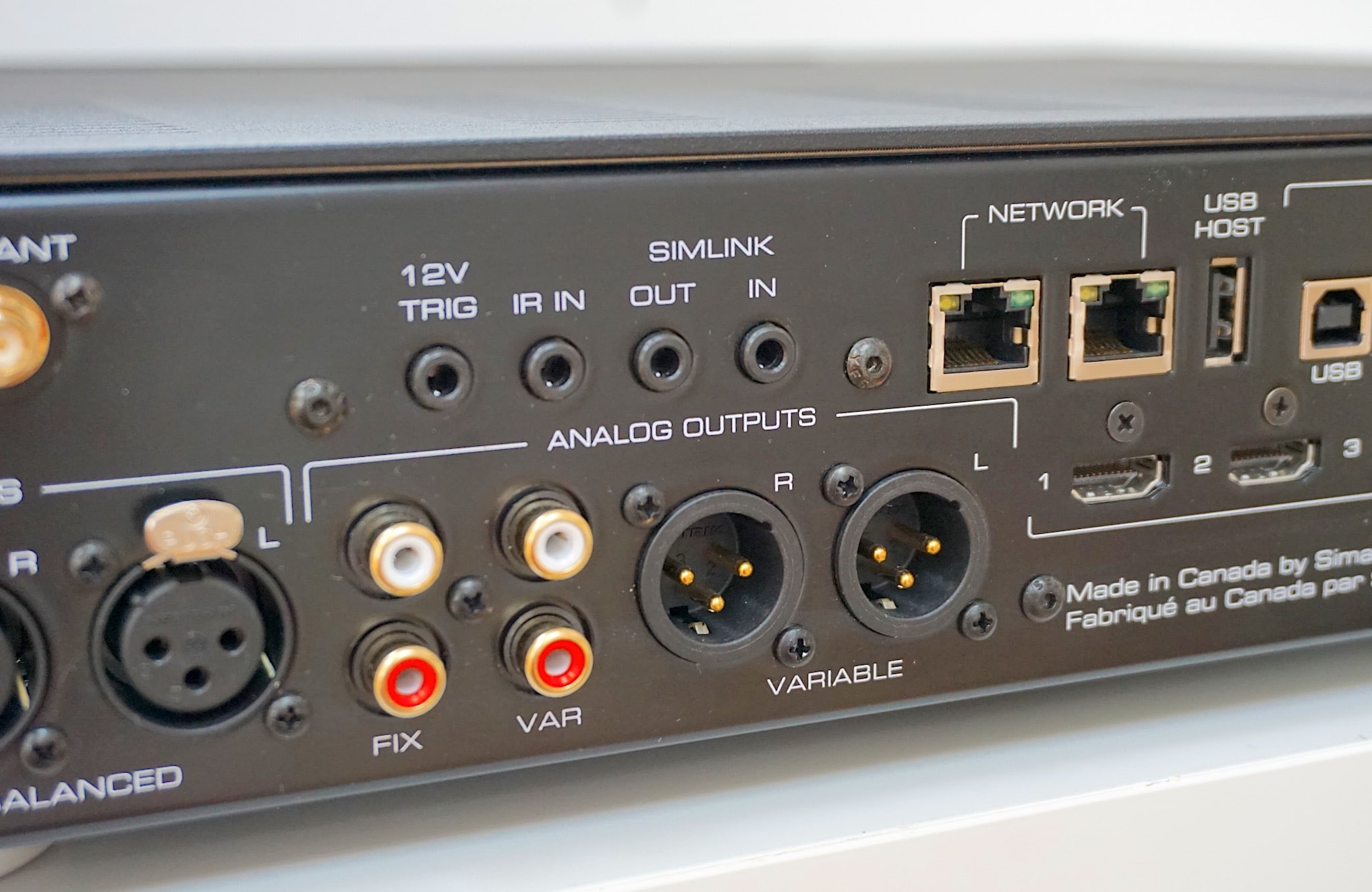
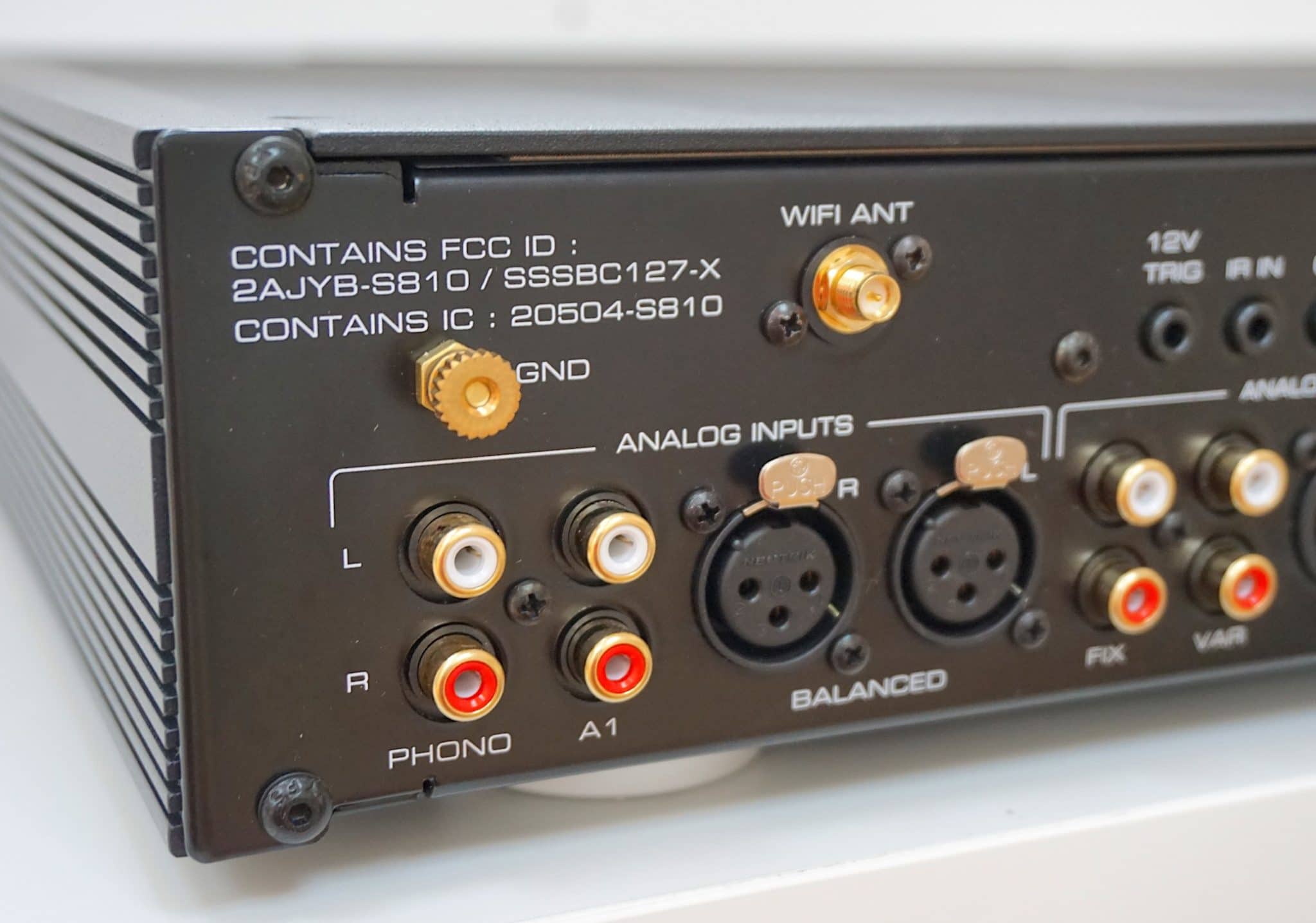
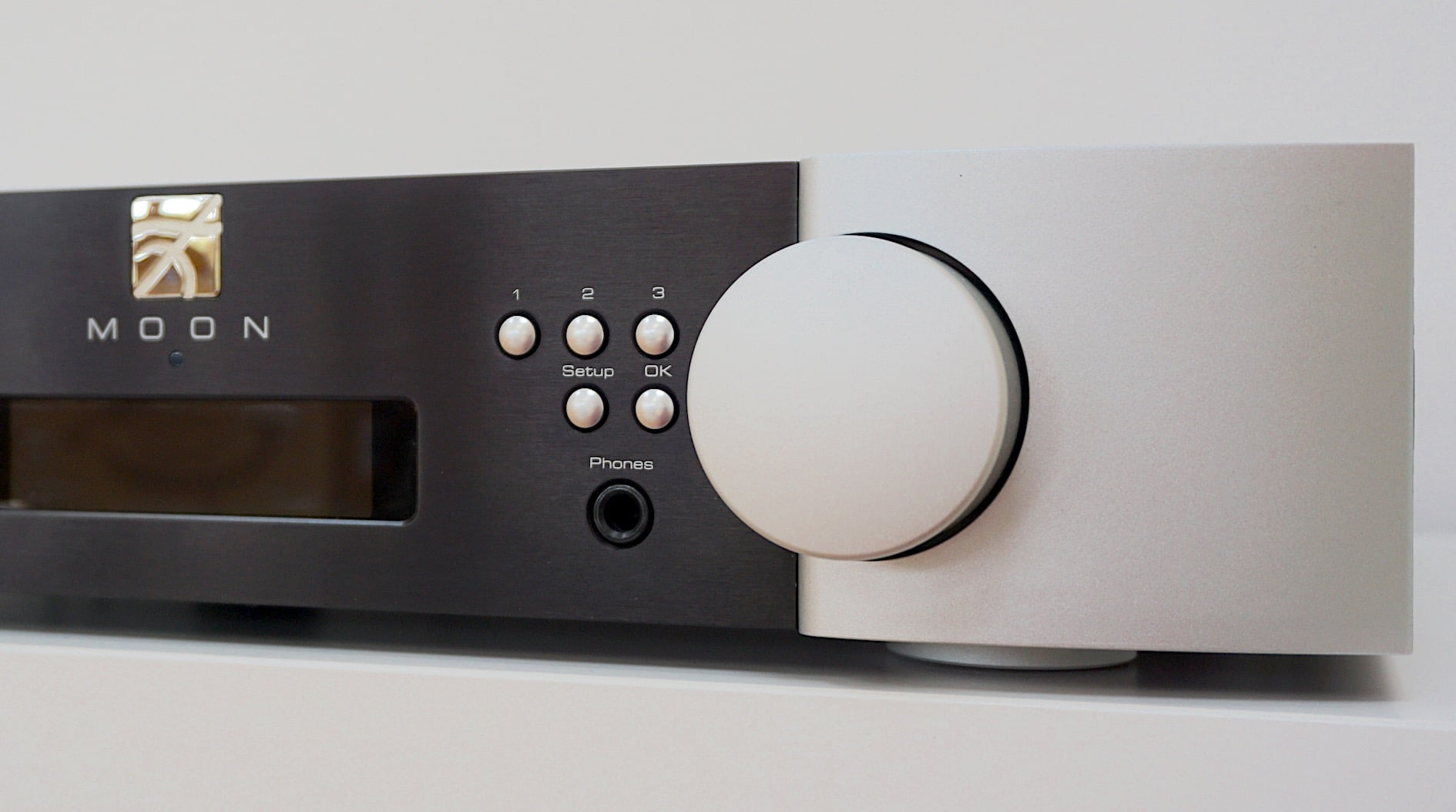
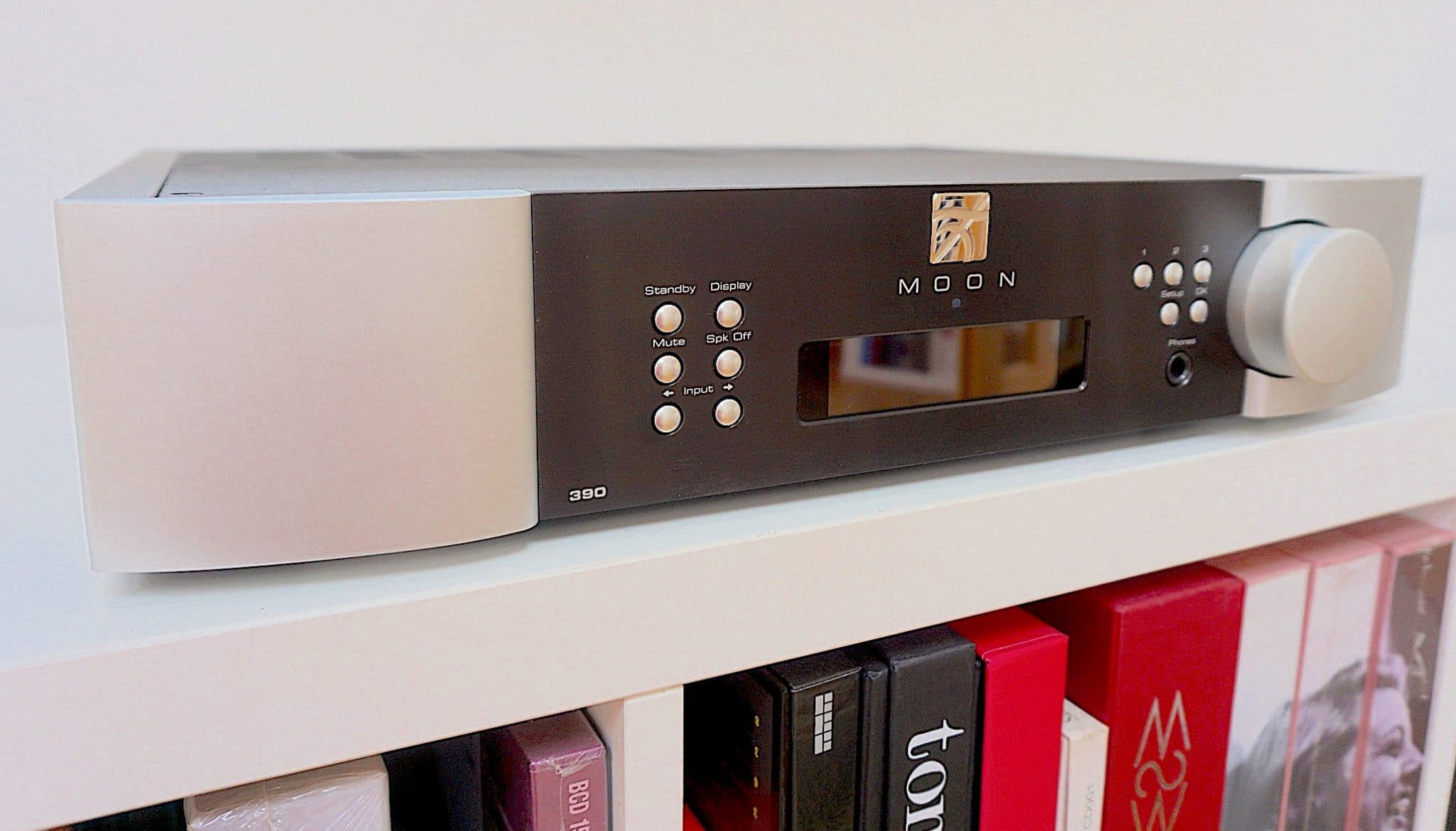
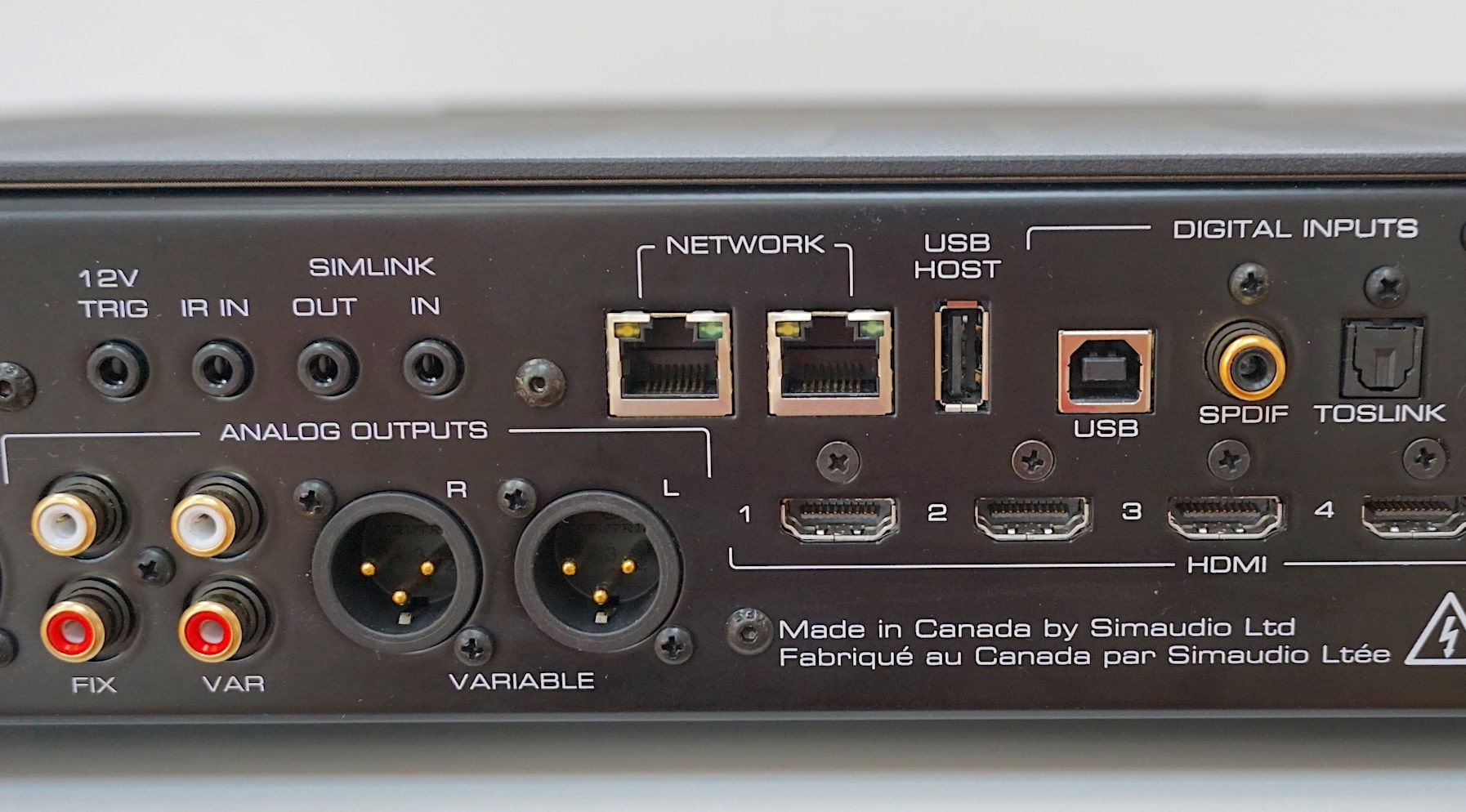


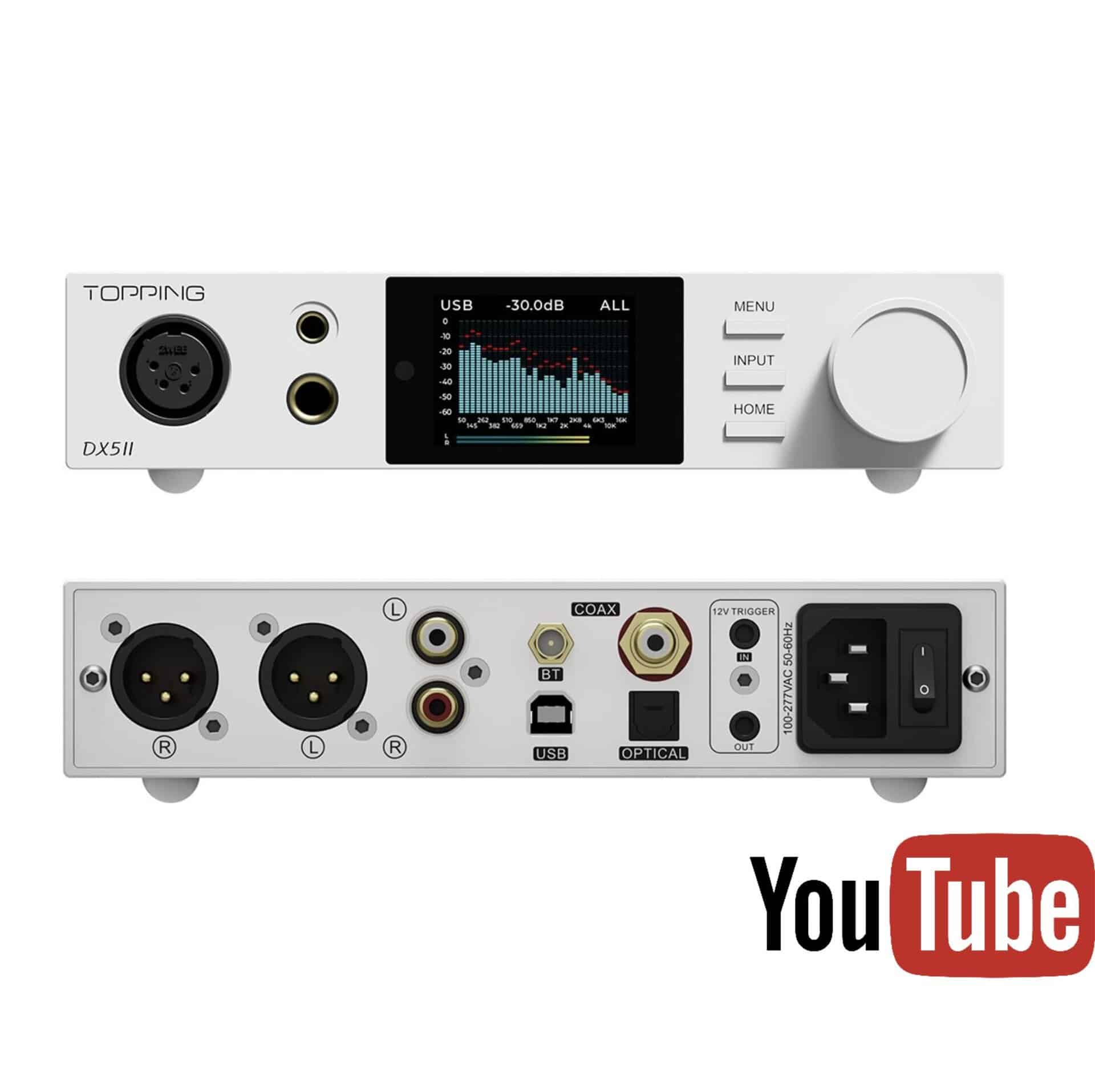
Very informative analysis. I have a high regard for Moon hifi but think I would prefer to buy their separates than an all-in-one but, I suspect from my own experience, that many women prefer this approach and the Moon seems a step-up from the Cyrus that you wrote about in an earlier article. It is, of course, considerably more expensive.
Thanks for your kind word Richard. Yes, Moon’s separates are very nice indeed.
Interesting reviews. As an owner of the 390, I can see how you found the user interface a bit frustrating to use, but for me it works well. Bluetooth connection is rock solid. Audio from hdmi input is as good as digital signal fed into Mind 2. For digital source, this is an awesome hifi kit. I also bought this unit thinking that i may get into records in future. So you see, this unit opens up door for digital guy like me to step into analogue world with ease. Dac is awesome in this unit. I had Hugo 2 before and i prefer sound of this unit over hugo 2. All in all, this unit produces one delicious sound.
Hi JP – yep, with you all the way on the performance side. Thanks for your comments.
Hi Paul, I’m interested in upgrading my Bluesound Vault 2 as a source and take it to the next level. I currently have an external Rega DAC R although open to a change to something like a Chord 2Qute. I’m therefore looking for a better streaming transport to feed an external DAC. My budget is between £1000 to £2000.
I very much like the BluOS app and a good, useable interface is a must. I’m therefore put off by SOTM which apparently has a clunky basic app (I don’t wish to use Roon).
Have you had experience of the DAC-less Moon Mind? Or I could look at a second hand Naim ND5XS as a transport only.
What would be best? I’d be interested in your thoughts!
Hi Ed – in pure sound terms I would always look at a separate, specialist streamer. I think the Moon would be a good choice. Great design, good support, well built, good performer.
Thanks Paul. I’ve read very positive things about Stack Audio’s new Link USB streaming bridge. Have you heard it and will you be reviewing it some time?
Hi Ed – the Stack? I maybe looking more closely at it during September.